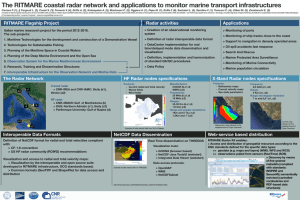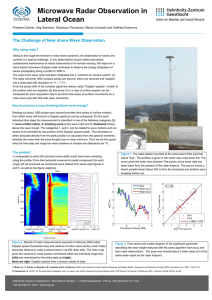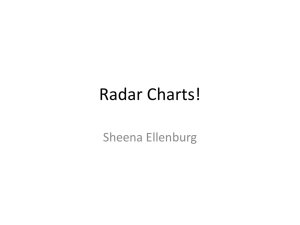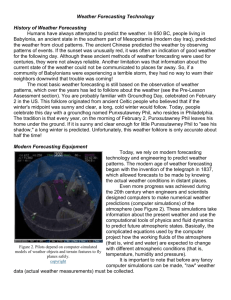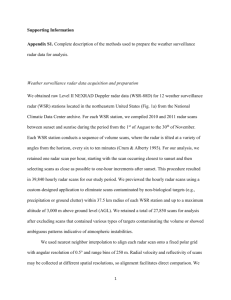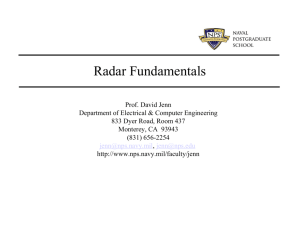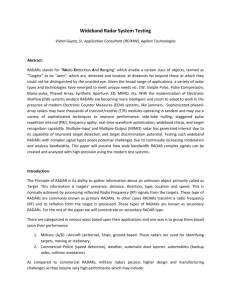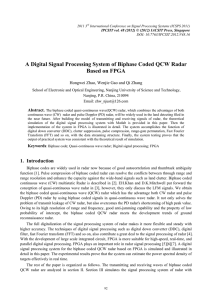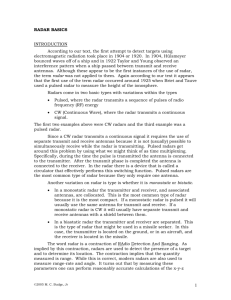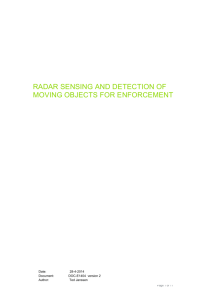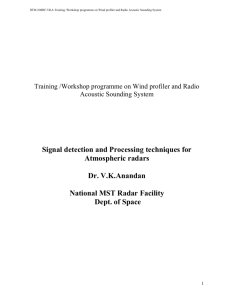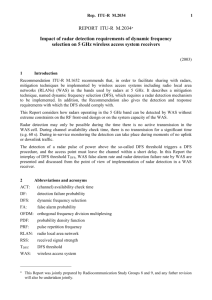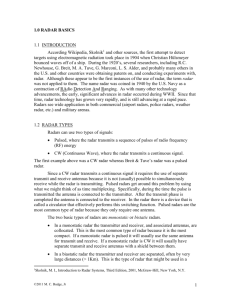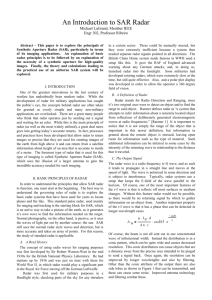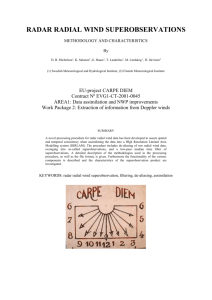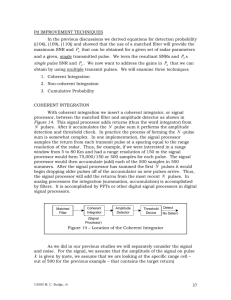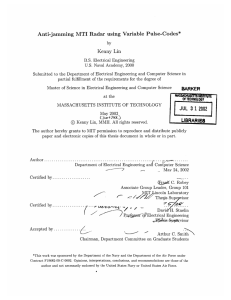Marine Radar Measurments of Directional Ocean Wave Spectra
advertisement
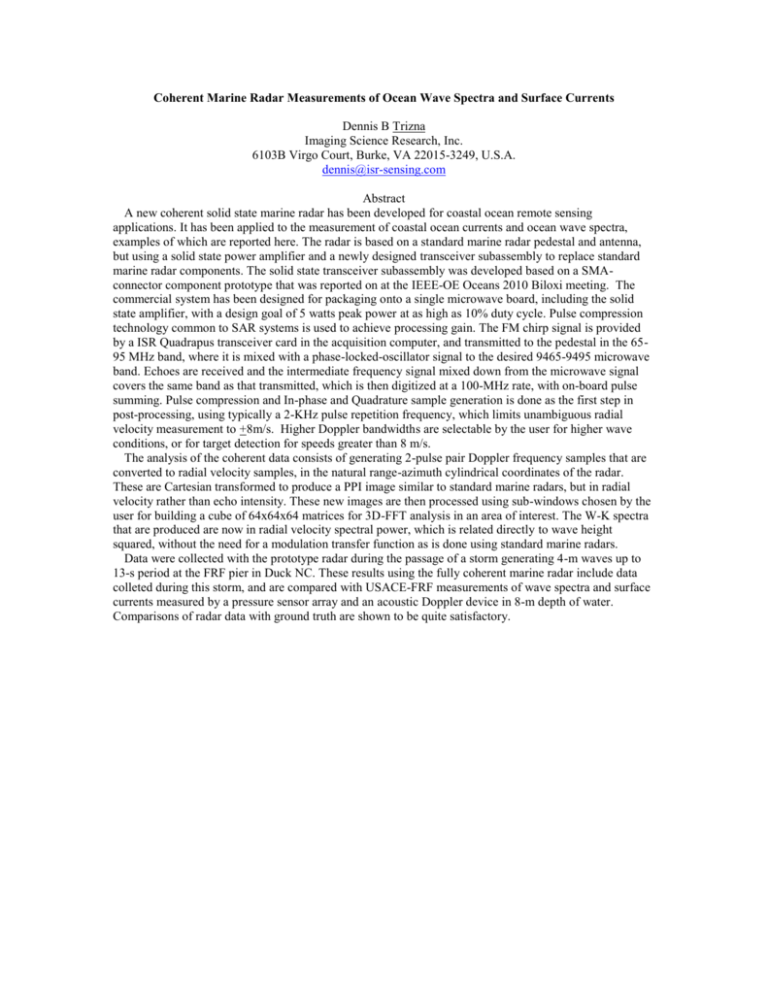
Coherent Marine Radar Measurements of Ocean Wave Spectra and Surface Currents Dennis B Trizna Imaging Science Research, Inc. 6103B Virgo Court, Burke, VA 22015-3249, U.S.A. dennis@isr-sensing.com Abstract A new coherent solid state marine radar has been developed for coastal ocean remote sensing applications. It has been applied to the measurement of coastal ocean currents and ocean wave spectra, examples of which are reported here. The radar is based on a standard marine radar pedestal and antenna, but using a solid state power amplifier and a newly designed transceiver subassembly to replace standard marine radar components. The solid state transceiver subassembly was developed based on a SMAconnector component prototype that was reported on at the IEEE-OE Oceans 2010 Biloxi meeting. The commercial system has been designed for packaging onto a single microwave board, including the solid state amplifier, with a design goal of 5 watts peak power at as high as 10% duty cycle. Pulse compression technology common to SAR systems is used to achieve processing gain. The FM chirp signal is provided by a ISR Quadrapus transceiver card in the acquisition computer, and transmitted to the pedestal in the 6595 MHz band, where it is mixed with a phase-locked-oscillator signal to the desired 9465-9495 microwave band. Echoes are received and the intermediate frequency signal mixed down from the microwave signal covers the same band as that transmitted, which is then digitized at a 100-MHz rate, with on-board pulse summing. Pulse compression and In-phase and Quadrature sample generation is done as the first step in post-processing, using typically a 2-KHz pulse repetition frequency, which limits unambiguous radial velocity measurement to +8m/s. Higher Doppler bandwidths are selectable by the user for higher wave conditions, or for target detection for speeds greater than 8 m/s. The analysis of the coherent data consists of generating 2-pulse pair Doppler frequency samples that are converted to radial velocity samples, in the natural range-azimuth cylindrical coordinates of the radar. These are Cartesian transformed to produce a PPI image similar to standard marine radars, but in radial velocity rather than echo intensity. These new images are then processed using sub-windows chosen by the user for building a cube of 64x64x64 matrices for 3D-FFT analysis in an area of interest. The W-K spectra that are produced are now in radial velocity spectral power, which is related directly to wave height squared, without the need for a modulation transfer function as is done using standard marine radars. Data were collected with the prototype radar during the passage of a storm generating 4-m waves up to 13-s period at the FRF pier in Duck NC. These results using the fully coherent marine radar include data colleted during this storm, and are compared with USACE-FRF measurements of wave spectra and surface currents measured by a pressure sensor array and an acoustic Doppler device in 8-m depth of water. Comparisons of radar data with ground truth are shown to be quite satisfactory.

